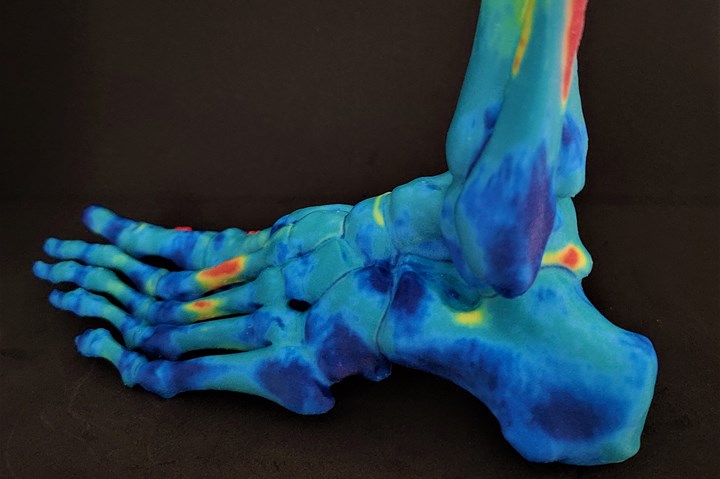Rize XRIZE composite printer now compatible with Synopsys platform for 3D medical printing
Platform combination enables the creation of affordable, full-color and functional 3D physical replicas from medical imaging for orthopedic, maxillofacial and cardiovascular application fields.

Photo Credit: Rize Inc.
Next-generation additive manufacturing company (Concord, Mass., U.S.) has announced that its XRIZE full-color industrial desktop composite 3D printing platform is compatible with ’ (Mountain View, Calif., U.S.) FDA 510(k)-cleared Simpleware software. More specifically, Simpleware software is cleared for creating models from medical imaging that can be exported to compatible printers such as XRIZE to produce physical replicas used for diagnostic purposes in the field of orthopedic, maxillofacial and cardiovascular applications. As part of its clearance process, Synopsys is able to use the XRIZE platform to validate an end-to-end DICOM to 3D print workflow, enabling a 3D point-of-care (POC) solution for end-users.
According to a June 2019 Allied Market Research report, 3D-printed healthcare applications are projected to reach $3.6 billion by 2026. “3D printing is becoming increasingly important in surgery, and the use of 3D-printed models has been shown to increase our understanding of musculoskeletal diseases,” says Professor Alister Hart MD, orthopedic surgeon, Royal National Orthopaedic Hospital, U.K. “We’re excited to work with RIZE’s 3D printing platform along with the Simpleware software solutions for image segmentation. Many aspects of surgical planning can benefit from 3D models — for example, to illustrate the distribution of bone density at various depths in the bone and to assist in positioning and screw placement.”
Complementing the Simpleware, XRIZE will aid creating highly durable anatomical models, surgical guides and implants with minimal effort, with vibrant color highlights on anatomical regions, bone densities and landmarking, according to Rize. Further, the printer’s UL GREENGUARD certification and minimal post-processing reportedly delivers a safety advantage while empowering clinicians and innovators with intelligent workflows that dramatically compress time and costs by 80-90%.
“Our technology has a proven track record for processing 3D images and creating models for a wide variety of applications,” says Terry Ma, VP of engineering at Synopsys. “Adding regulatory clearance for point-of-care 3D printing enables our growth in the point-of-care clinical space, where Simpleware software and our team’s technical expertise will allow for better patient care and a faster workflow for medical professionals.”
Related Content
-
Flux GmbH sponsors TUM Dash exoskeleton team
Flux to supply precision inductive rotary encoders for exoskeleton initiative for paraplegic patients that is expected to incorporate a future carbon fiber frame.
-
Generative Orthoses project to reshape orthopedic care
CRP Technology, MHOX and Istituto Ortopedico Rizzoli, one of the winners of the WORTH Partnership Project II, have developed bespoke orthoses using generative design, Windform GT fiberglass materials and PBF.
-
Filament winding increases access to high-performance composite prostheses
Steptics industrializes production of CFRP prostheses, enabling hundreds of parts/day and 50% lower cost.



